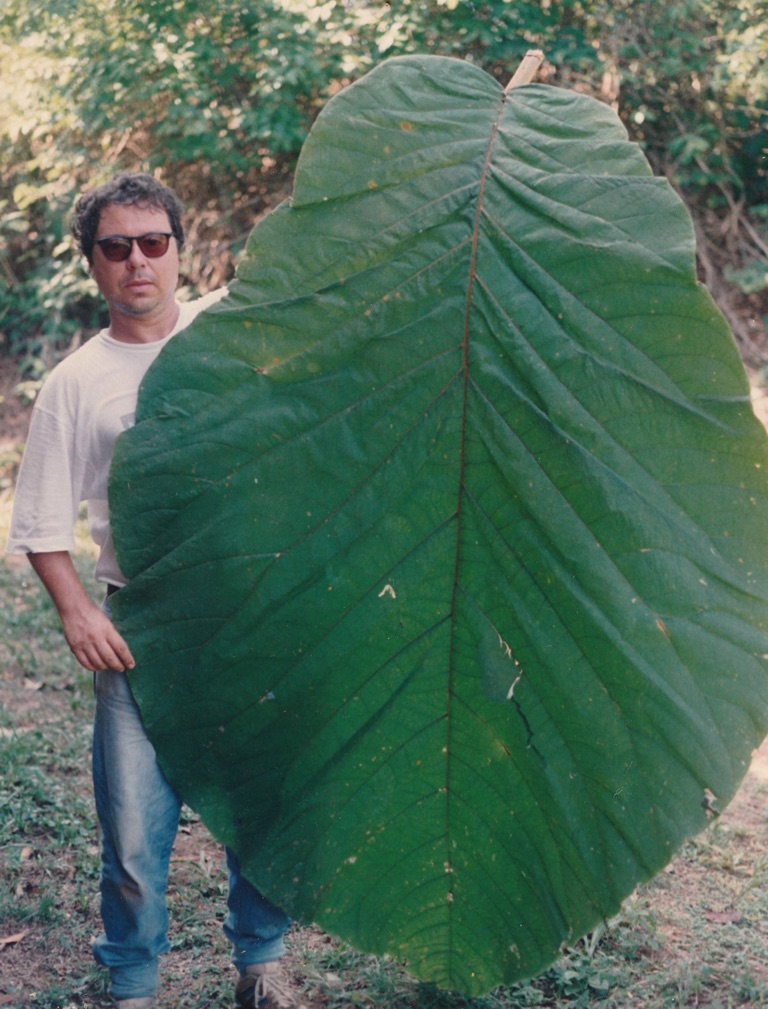
Amazonian tree with human-sized leaves finally gets ID’d as new species
- More than 35 years after it was first seen, researchers have described Coccoloba gigantifolia, a tree species from the Brazilian Amazon with gigantic leaves that can reach 2.5 meters (8 feet) in length.
- Although C. gigantifolia has been known to the public and the scientific community for a long time, describing it formally and giving it an official name was essential to be able to assess its conservation status and design conservation strategies to protect it, the researchers say.
- The species is rare and likely has disjointed populations occurring in a rapidly changing landscape, and the researchers recommended listing it as endangered on the IUCN Red List.
Researchers have known that the tree is a species of Coccoloba, a genus of flowering plants that grow in the tropical forests of the Americas. Botanists from INPA first encountered an individual of the unknown Coccoloba tree in 1982 while surveying the Madeira River Basin in the Brazilian Amazon. They spotted more individuals of the plant over subsequent expeditions in the 1980s. But they couldn’t pinpoint the species at the time. The individual trees weren’t bearing any flowers or fruits then, parts that are essential to describing a plant species, and their leaves were too large to dehydrate, press and carry back to INPA. The researchers did take notes and photographs.
In 1993, botanists managed to finally collect two large leaves from a tree in the state of Rondônia, which they then framed for public viewing at INPA. “The species became locally famous, but due to the lack of reproductive material it could not be described as a new species for science,” Rogério Gribel, a researcher at INPA, told Mongabay in an email.
Advertisements
04 February 2023
Advertisements



